Windows update blank page is an issue where the user opens up the update settings, yet the page is blank, or it does not respond at all. It not only disrupts the workflow but also reduces the overall efficiency since any pending updates disrupt the performance and security of the system.
This may slow down productivity and workload among professionals who depend on updated information. In this article, we will discuss why this problem occurs and provide viable solutions to address the issue, allowing you to easily handle Windows updates.
Try Recoverit to Perform Windows File Recovery

In this article
-
- Fix 1. Run Windows Update Troubleshooter
- Fix 2. Use SFC and DISM Commands
- Fix 3. Reset Windows Update Components
- Fix 4. Install Updates from Microsoft Update Catalog
- Fix 5. Run Disk Cleanup
- Fix 6. Clear Windows Update Cache
- Fix 7. Use System Restore
- Fix 8. Delete the Windows Update Store Folder
- Fix 9. Restore Default Permissions to Windows Update Files
- Fix 10. Perform a Clean Boot
- Fix 11. Restore the Windows Store and App
Part 1. Common Reasons You Need to Fix the Windows Update Blank Page in Settings
Before you jump into the solutions to fix the Windows Update blank page in settings issue, you should be aware of the underlying issue. In this section of the article, we will be looking into the common reasons that cause this problem:

- Corrupted/Missing System Files: Corrupted system files or accidentally deleted system files may fail to allow content to show on the settings page, which leaves a blank screen.
- Outdated Windows Version: The old version of Windows or installation problems frequently result in compatibility issues that cause blank pages in the Update section.
- Interrupted Updates: Failing to install Windows updates completely can leave the system in a vulnerable position and may result in the inability to load the Windows Update screen.
- Corrupted Windows Update Components: Windows update white screen may not load its interface due to corrupted Windows update components or a damaged Software Distribution folder.
- Graphics Driver Issues: The graphical user interface may not be able to render the Update page due to graphics driver problems (including old or corrupted drivers).
- Third-Party Software Malware Interference: It disrupts the system's operations, can break the Settings app, including the Windows Update page, and render it as a blank page.
Part 2. Basic Methods to Fix Windows Update Blank Page in Settings
Once you are clear on the reasons behind the Windows Update blank page in settings, start understanding the fixes for them. Since there are many solutions to fix the said issue, in this section, we will discuss each and every solution for fixing the Windows Update settings issue.
Fix 1. Run Windows Update Troubleshooter
Windows Update Troubleshooter is among the simple methods of identifying and correcting common update issues. It automatically scans the system, detects the glitches, and implements the solutions with the least amount of effort. Read through the steps below and figure out how to fix the Windows update blank page through the Windows troubleshooter:
- Choose the "Settings" option from the Windows Start section on your Windows PC.
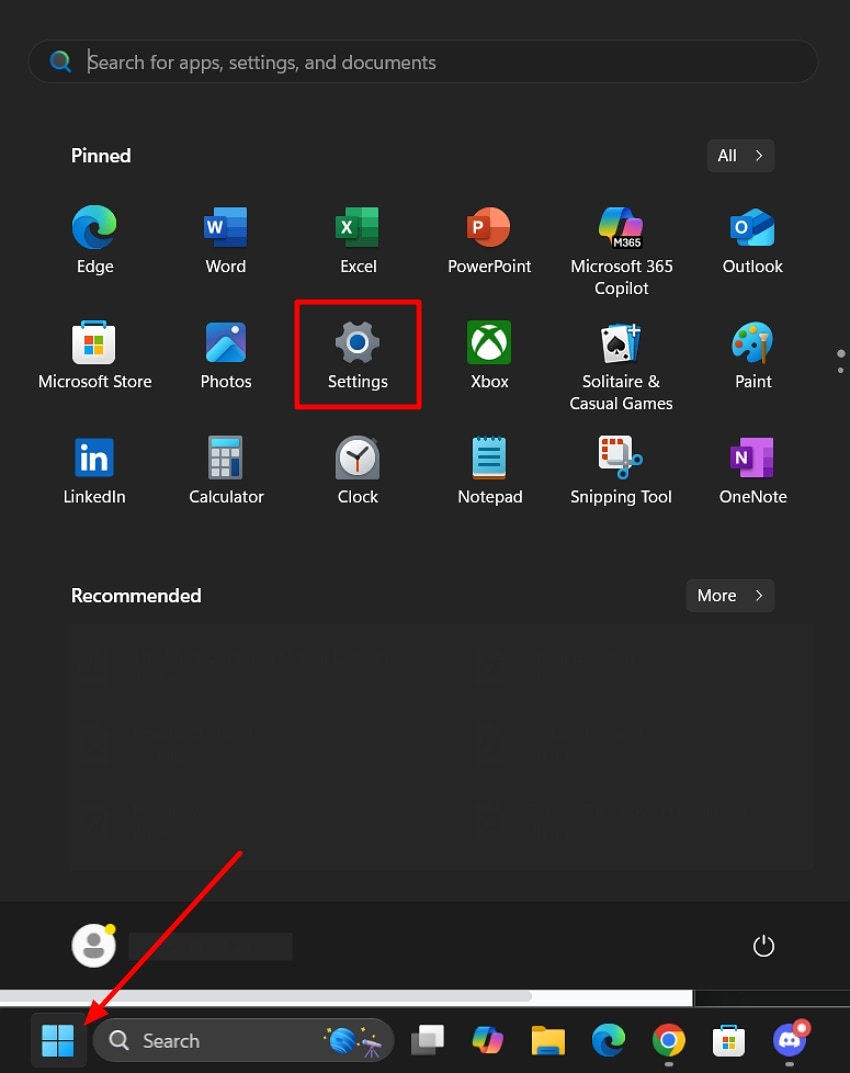
- From the left side bar, pick the "System" section and scroll down to select the "Troubleshoot" option from the list.
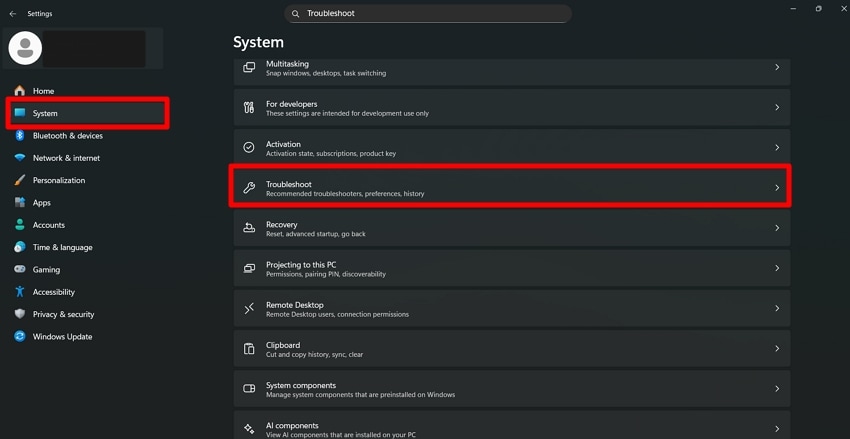
- Next, select the "Other Troubleshooters" option from the "Troubleshoot" menu.
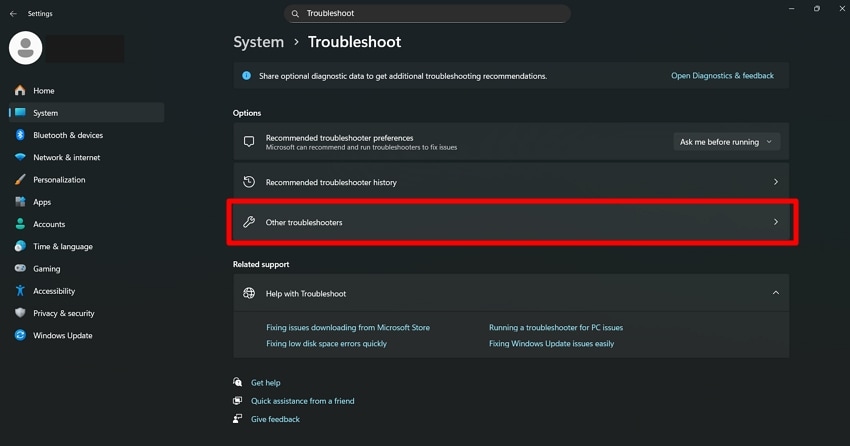
- Lastly, locate the "Windows Update" tab and click the "Run" button beside it to initiate troubleshooting the Windows update. Use the instructions displayed on the screen to identify the root issue and fix it.
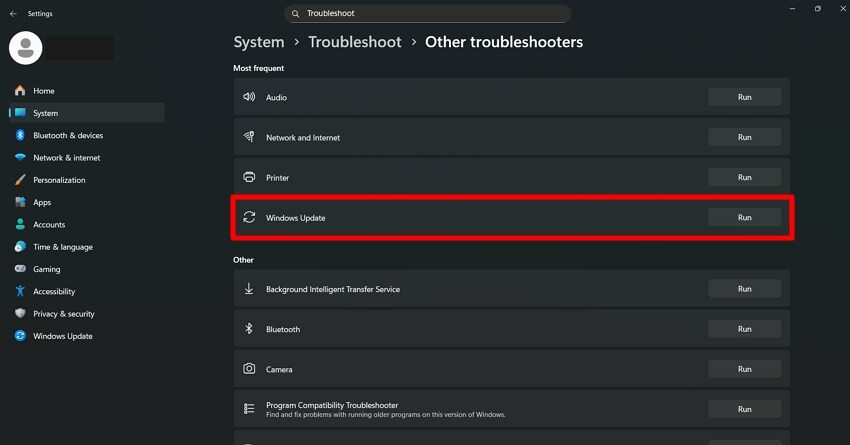
Fix 2. Use SFC and DISM Commands
Running SFC and DISM would fix any corrupt or missing system files, which would then restore Windows stability. They are strong in their ability to scan deep into the system and automatically replace files. This is followed by a step-by-step process on how to use these commands to correct the Windows update white screen:
- From the "Start" button on your PC, search for "Command Prompt" and select the "Run as Administrator" option from the right tab.
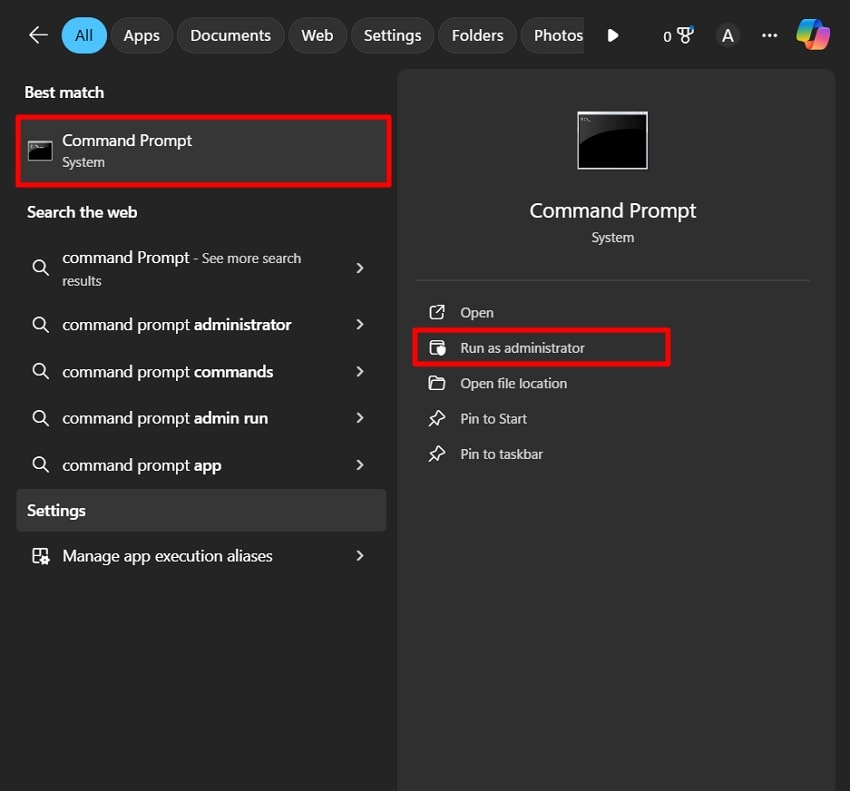
- Once you access the command prompt, type in the "sfc /scannow" command and hit the "Enter" key on your device’s keyboard.

- In case the issue does not resolve, open up "Command Prompt" as an administrator again and type in the following prompts: "dism /online /cleanup-image /scanhealth," "dism /online /cleanup-image /checkhealth," or "dism /online /cleanup-image /restorehealth."
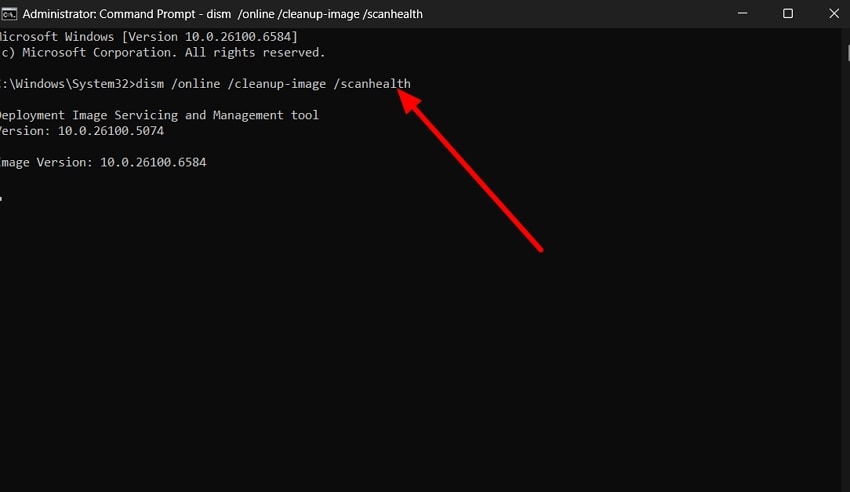
Fix 3. Reset Windows Update Components
One sure way of repairing corrupted service or folder problems is to restart the Windows Update components. It assists in restoring the regular operation of Windows Update through reinitiating essential components. Here are the steps you can follow to fix the Windows update blank page:
1. Run CMD as administrator, type in the following commands, and press the "Enter" key after each prompt.
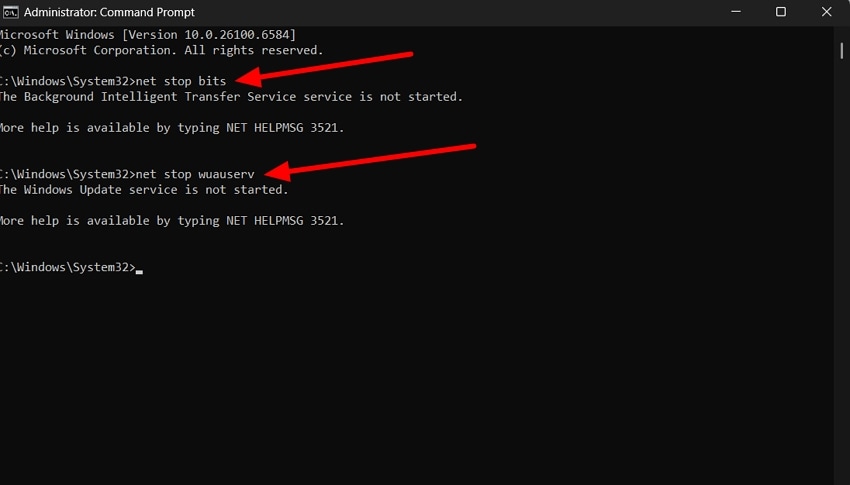
- net stop bits
- net stop wuauserv
- net stop appidsvc
- net stop cryptsvc
2. Run the commands mentioned below to rename the folders and press the "Enter" key after each prompt.
- ren C:\\Windows\\SoftwareDistribution SoftwareDistribution.old
- ren C:\\Windows\\System32\\catroot2 Catroot2.old
3. Next, restart the services and run these commands to finally restart the computer and check if the Windows update white screen is functioning.
- net start wuauserv
- net start cryptSvc
- net start bits
- net start msiserver
Fix 4. Install Updates from Microsoft Update Catalog
Another method to maintain your system is the Microsoft Update Catalog, which makes sure that your system is secure, even when your Settings app is failing. While it updates manually, it is an easy-to-follow procedure that makes it a convenient method for beginners. The procedure below will help you apply this technique to fix the Windows Update blank page in settings:
- Go to the official website, in the search bar type in "KB5061087," and hit the "Search" button to start the search.

- Once the list is generated, click the "Download" button next to the version that you want to use.
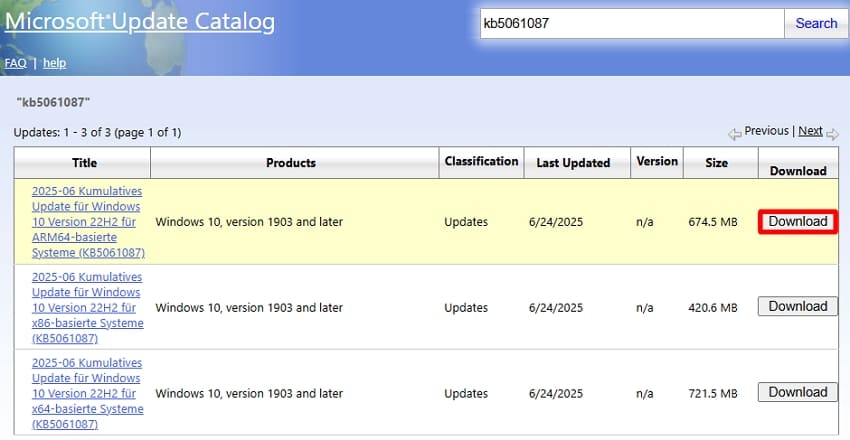
- Finally, click the "Link" to initiate the download process and access the Windows Update page.
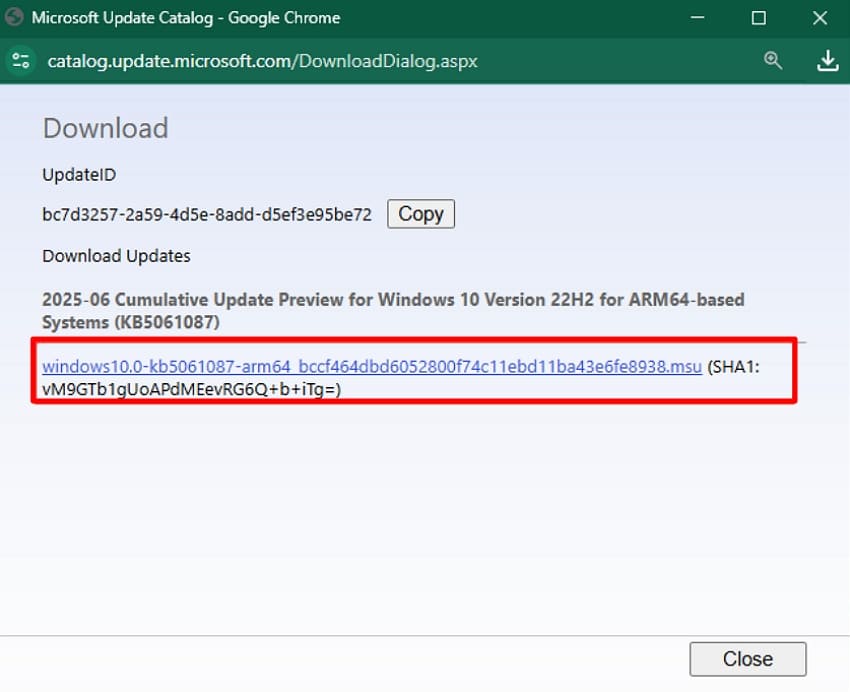
Fix 5. Run Disk Cleanup
Disk Cleanup is a helpful tool for cleaning systems, which eliminates temporary files and system clutter that can cause interference with Windows updates. This saves space as well as enhances the performance and responsiveness of the system. Let us now discuss how to run the Disk Cleanup to resolve the Windows update blank page:
- Locate the Disk Cleanup App on your PC and launch the tool. Then, select the "Drive" from the drop-down menu and hit the "OK" button.
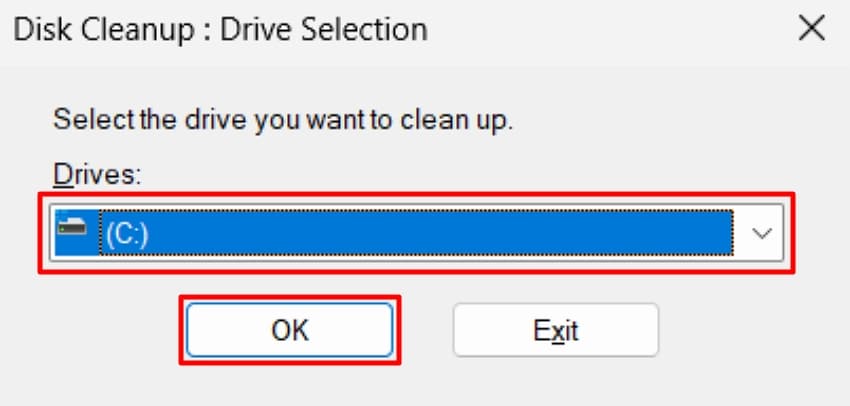
- A new pop-up box will appear; here, tick the checkboxes of the items you want to "Delete" from the specific drive. To delete the system files, click on the "Clean Up System Files" button and hit "OK."
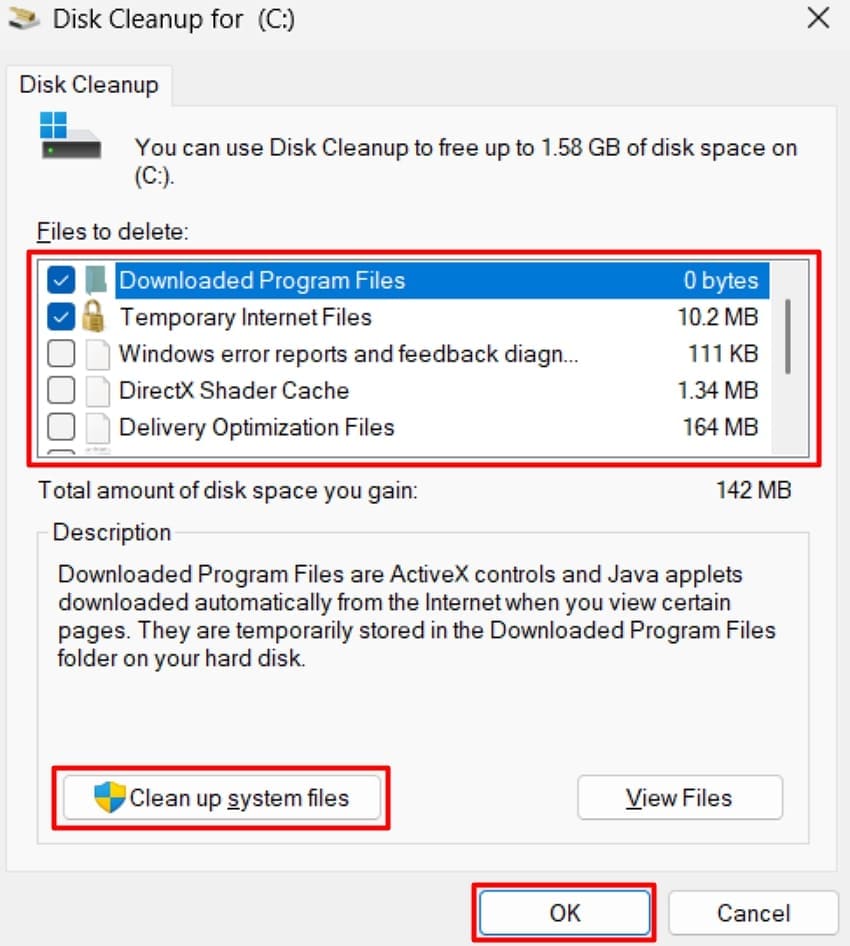
Fix 6. Clear Windows Update Cache
To solve problems with the outdated or corrupted cache files, it is recommended to clear the Windows Update cache. It's a convenient method because it immediately eliminates conflicts in the Windows Update Settings. Follow the steps below and clear the cache to fix the Windows update white screen:
- Launch CMD as an administrator and type in the prompt "net stop wuauserv" and hit the "Enter" key. Type in the "net stop bits" prompt and hit the "Enter" key again.

- Once you do this, jump to the "SoftwareDistribution" folder and delete all the folders within it. Next, launch CMD as an administrator again and type the prompt "net start wuauserv" before hitting the "Enter" key. Consequently, type the "net start bits" command and successfully clear the Windows Update cache.
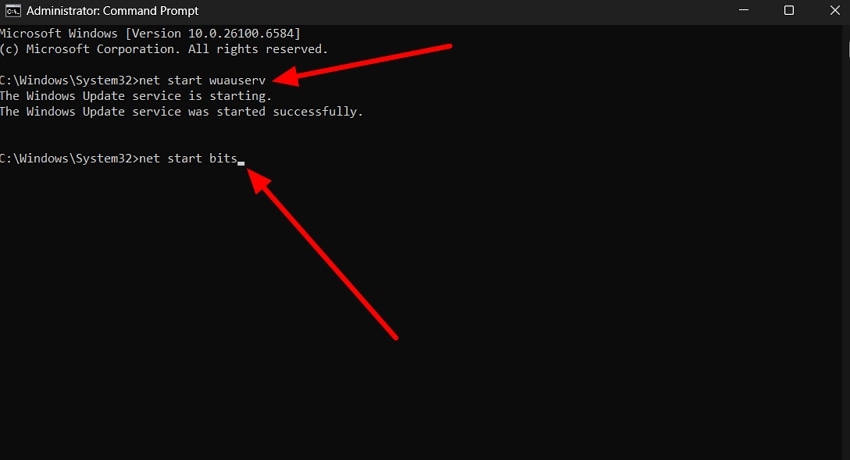
Fix 7. Use System Restore
System Restore will enable you to undo your system to a point when everything was working. This solution is effective since it reverses troubling modifications without interfering with your personal files. It has positive attributes such as reliability and ease of use, which provide Windows users with a safety net. Dive into the steps below and clear your issue of "My Windows Update page is blank" by using System Restore:
- Access the "Recovery" app on your PC and click on the "Open System Restore" option.
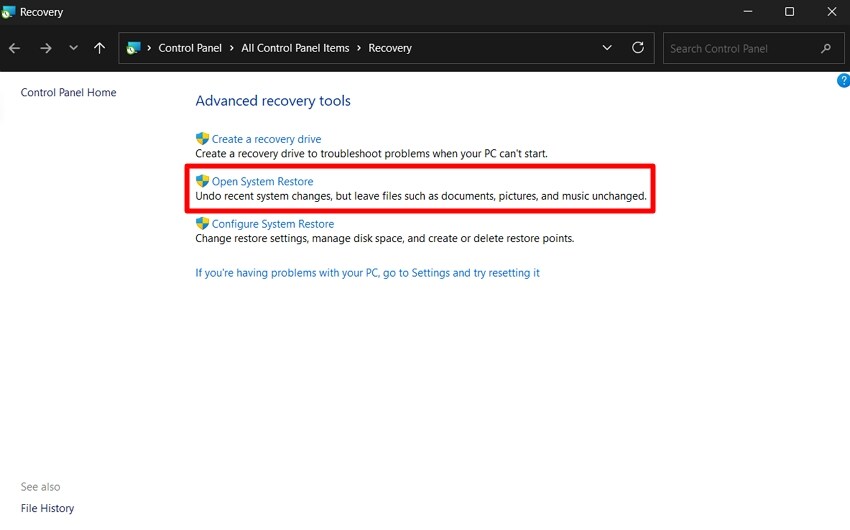
- As the System Restore window opens up, hit the "Next" button to proceed further into the restoration process.
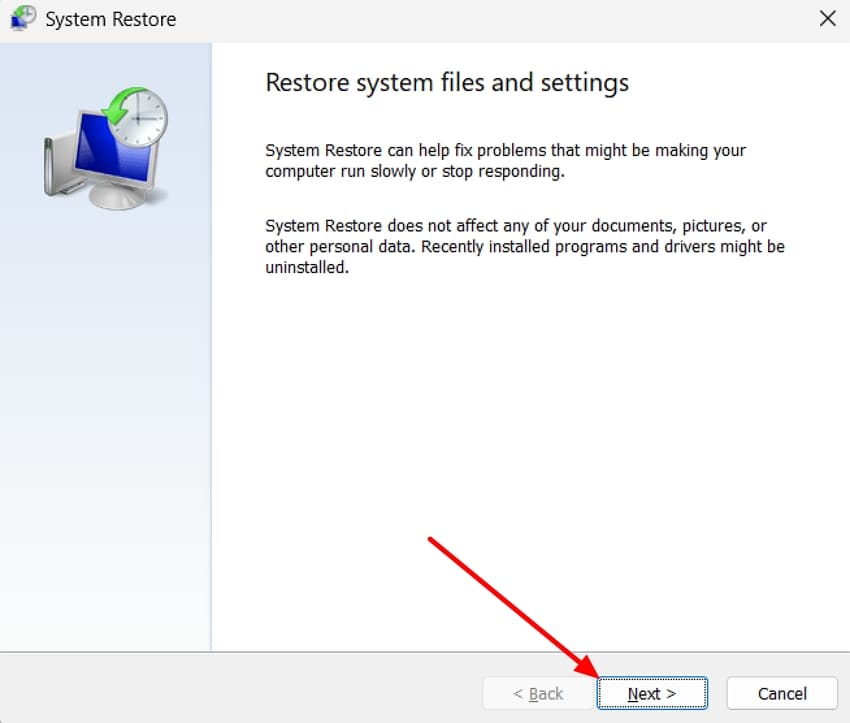
- As a list of recorded restoration events appears, select the appropriate one and continue with the "Next" button.
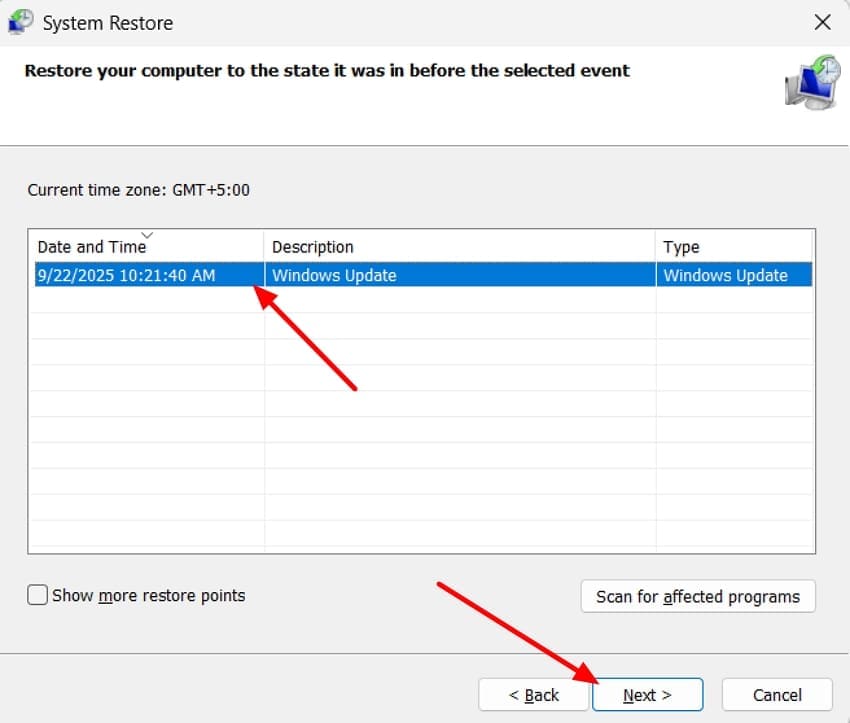
- Confirm the restoration point for your Windows using the "Finish" button, which updates the system successfully.
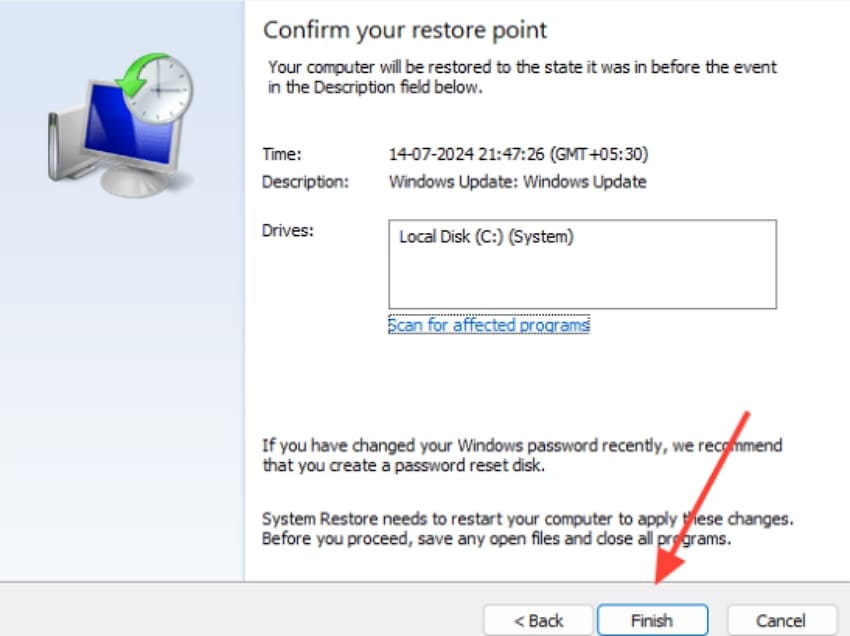
Fix 8. Delete the Windows Update Store Folder
One of the solutions to corrupted files causing updates to not load is the deletion of the Windows Update Store folder (SoftwareDistribution). It deletes troublesome data and lets Windows create the folder afresh. The advantage of this solution is that it directly addresses the underlying problem but is comparatively easy to carry out. At this point, we can look into the steps below to fix the Windows update blank page:
- Launch the "Services" app on your PC as an administrator. From the list, locate the "Windows Update" option and right-click on it to choose the "Stop" button.
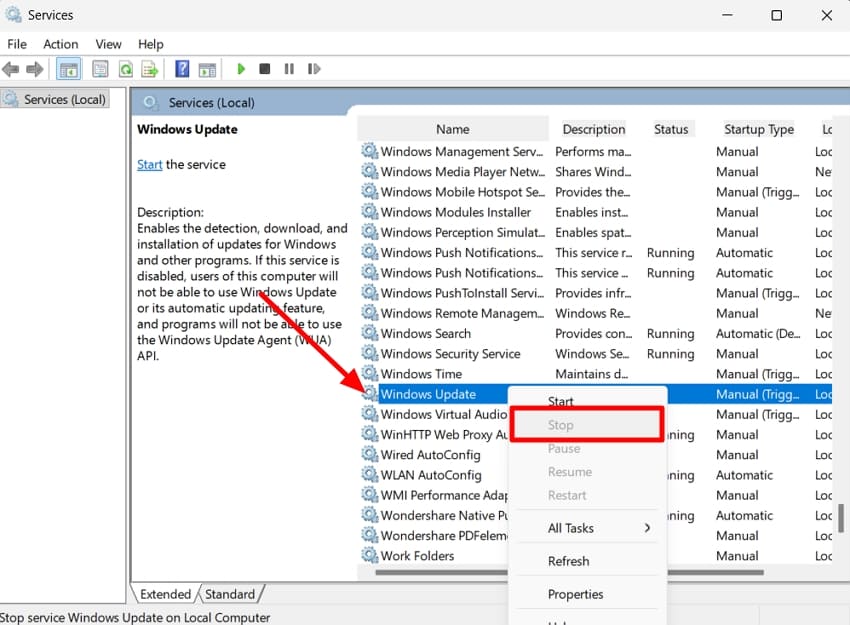
- Finally, from your C:/ drive, locate "SoftwareDistribution" and delete it, where Windows will create a new one once you update it again. As you restart your PC, you can access the Windows Update screen easily.
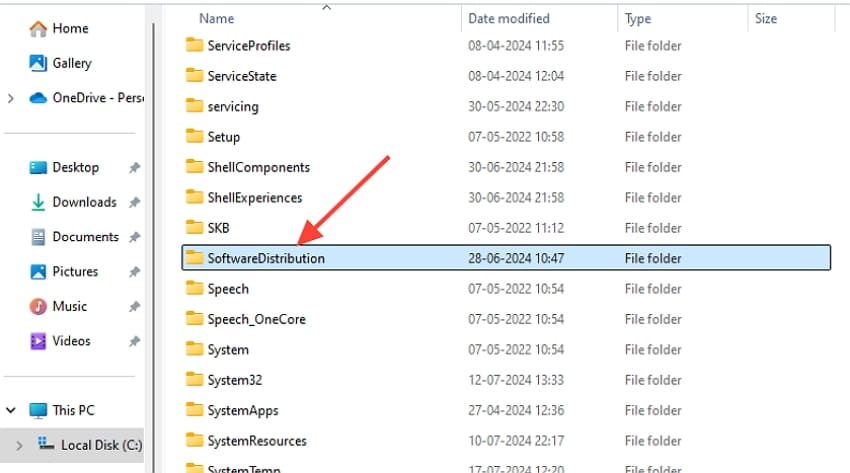
Fix 9. Restore Default Permissions to Windows Update Files
The change of default permissions makes Windows Update files and folders available to the system and avoids the occurrence of errors associated with limited access. Its efficiency consists of restoring permissions to their functional settings. Now, we will discuss the procedure of regaining permissions to fix the Windows Update blank page in settings:
- Jump to the "C\Windows\System32" folder in your Windows Explorer and search for the 'wuauclt.exe' file within the folder. Right-click on it and choose the "Properties" option from the drop-down list.
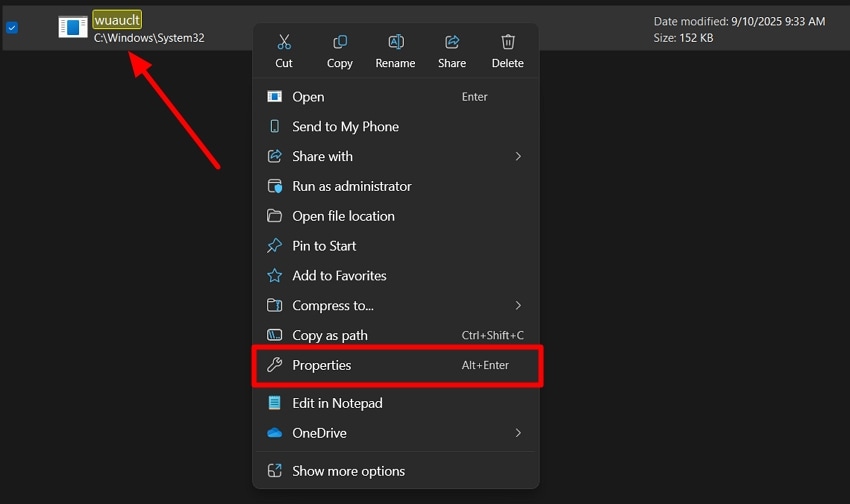
- Next, in the "Properties" dialog box, pick the "Security" section and hit the "Advanced" option under it.
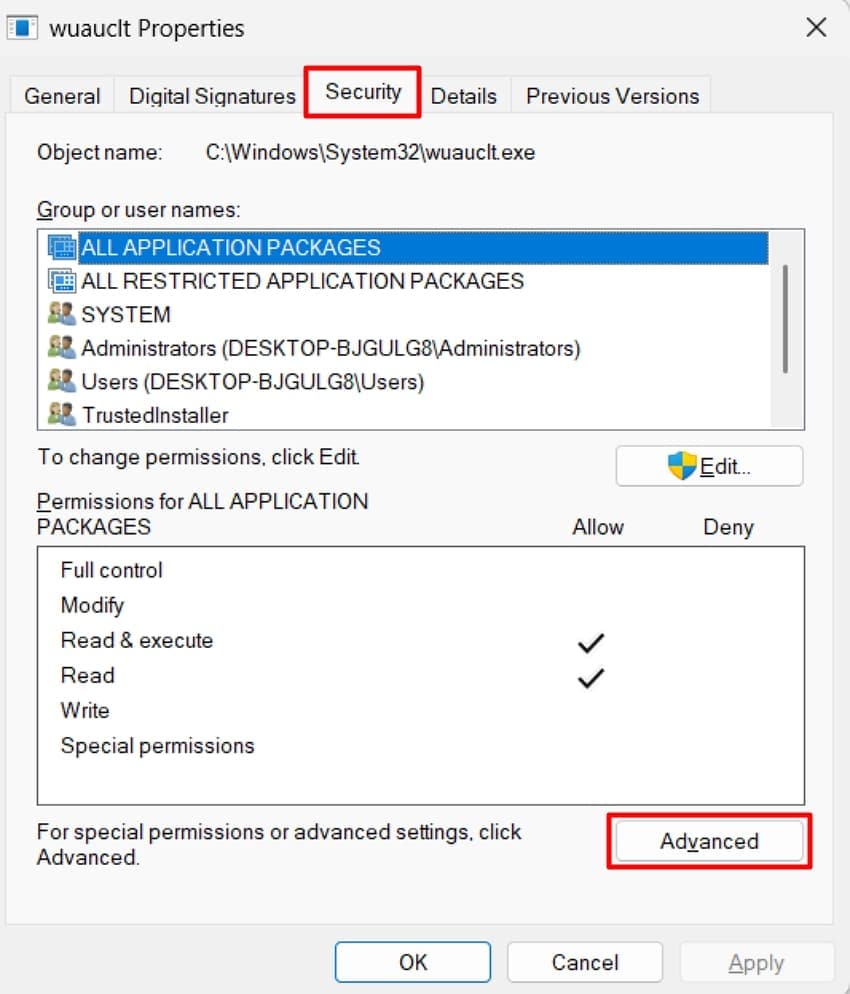
- Following this, hit the "Change" button, type in "Administrators" into the "Enter the Object Name to Select" text box, and hit the "OK" button. Choose "OK" again to close the properties window and open it again to get the changes applied.
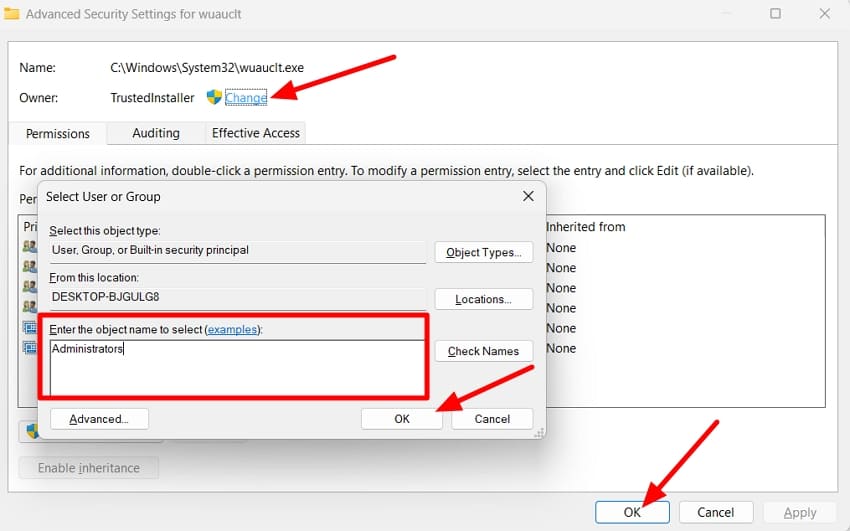
- Again, jump to the "Security" segment and pick the "Edit" button.
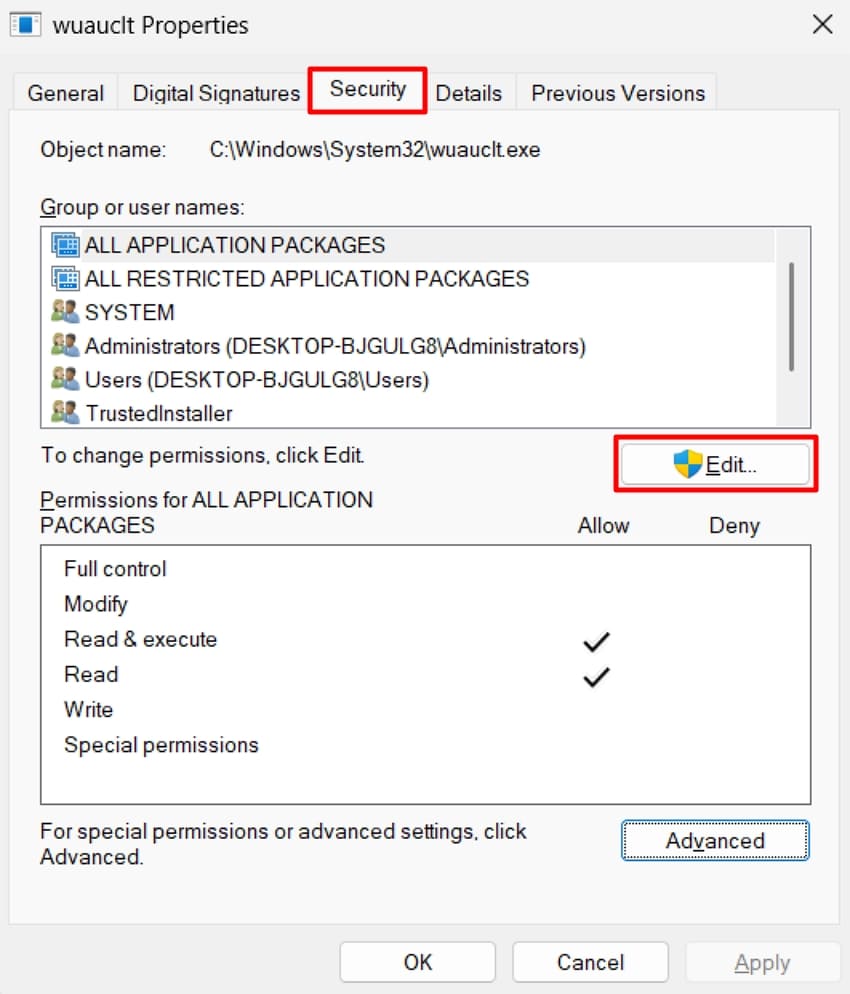
- From the extended dialog box, tick the checkbox of "Full Control" and click on the "OK" button. Repeat the steps for the "System" account and ensure the "Read and Execute" box is ticked. You can finally restart your PC and check the Windows Update screen to make sure it's accessible.

Fix 10. Perform a Clean Boot
Running a Clean Boot assists you in discovering and getting rid of software discrepancies that hamper the Windows Update. It is a good troubleshooting measure that makes the performance run more smoothly. Moving into the steps below, figure out how to perform the Clean Boot procedure to fix the Windows update white screen:
- Access "System Configuration" on your device, jump to the "Services" tab, and hit the checkbox of "Hide All Microsoft Services."
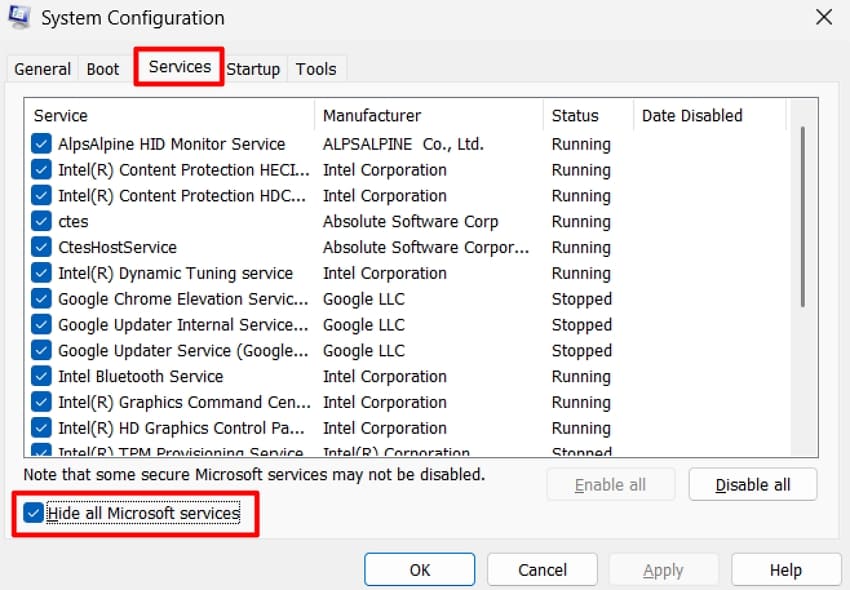
- Then, hit the "Disable All" option and move to the next step.
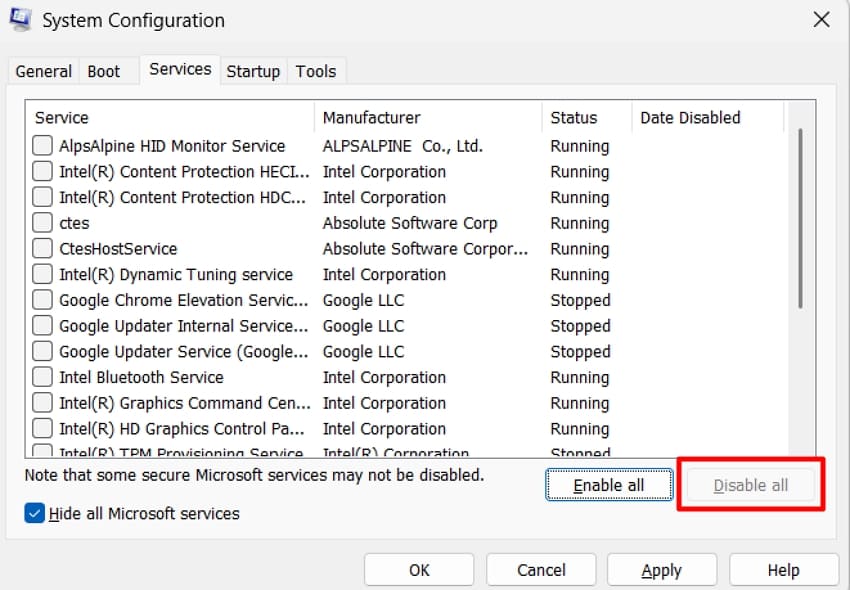
- Jump to the "Startup" section and click on the "Open Task Manager" option.
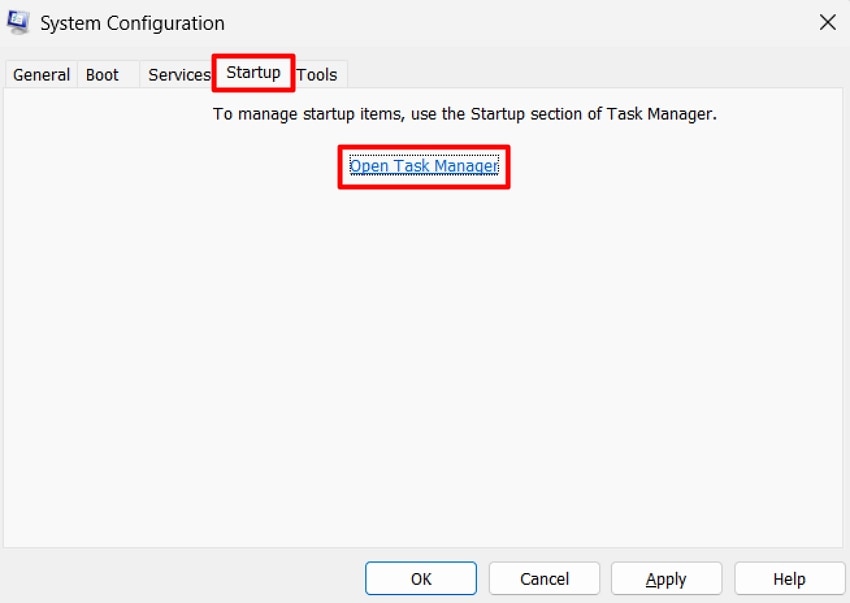
- Next, go through the running applications and right-click on it to pick the "Disable" option from the pop-up list menu.
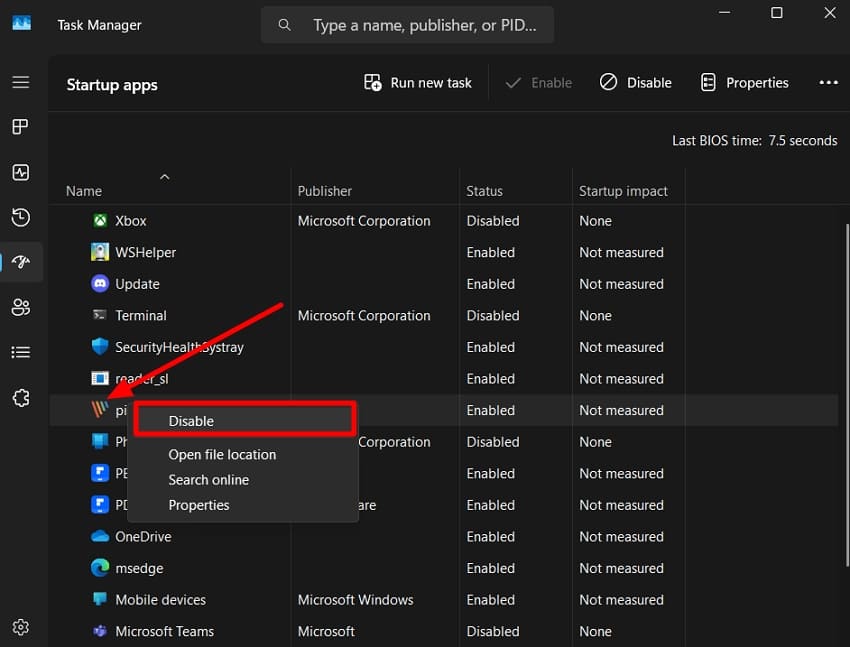
- Once you close the Task Manager, click the "OK" button and close the "System Configuration" process. Check back on the Windows Update screen to make sure that the screen is operating normally.
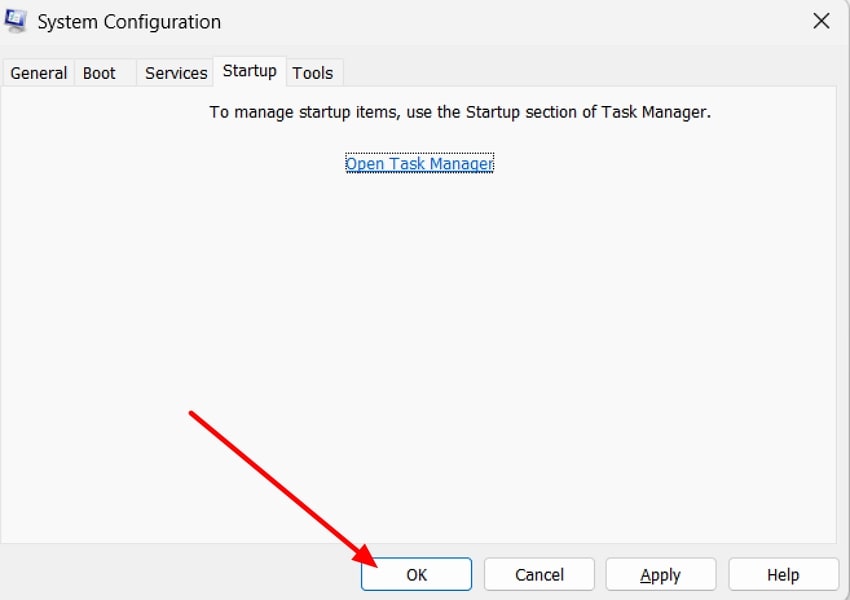
Fix 11. Restore the Windows Store and App
Issues with the Windows Update interface, such as the blank Windows Update screen, can be resolved by restoring the Windows Store and the associated apps. It will update critical system applications that may be corrupted, which is effective in the restoration of basic functionalities. The instructions below will help you understand the straightforward process to fix the Windows Update blank page in settings:
- In the Startup menu, search for Windows PowerShell and run it as an administrator.
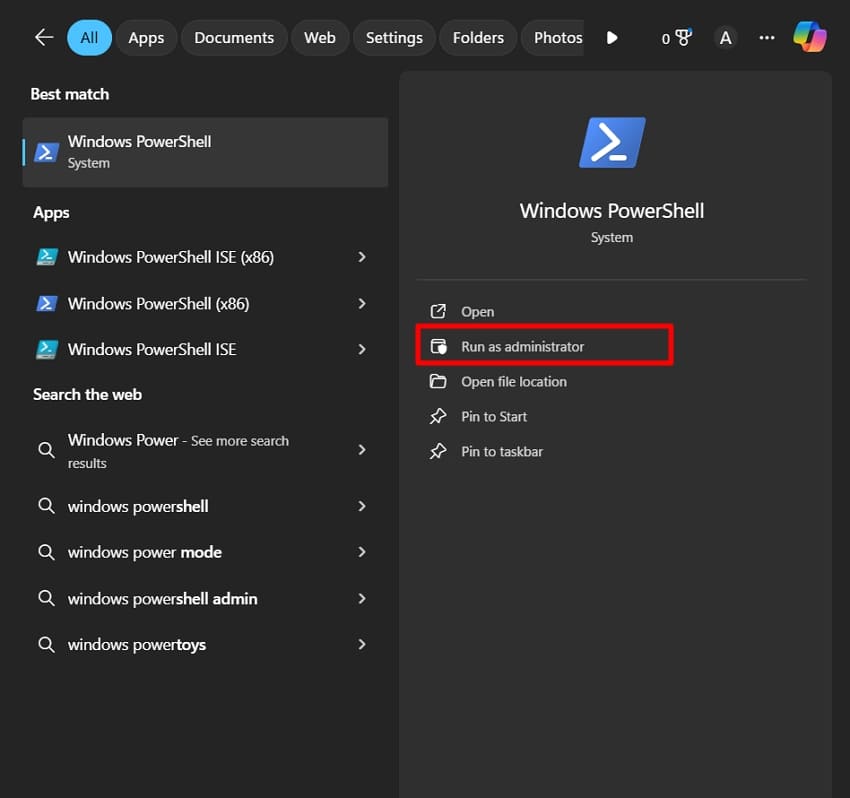
- Type in the prompt "Get-AppXPackage | Foreach {Add-AppxPackage -DisableDevelopmentMode -Register "$($_.InstallLocation)\AppXManifest.xml"}" and hit the "Enter" key on your keyboard.

- Restart your PC, open up the PowerShell app again, and type the following commands into it, reboot your Windows device, and check the Windows Update page:
- net stop bits
- net stop wuaserv
- net stop appidsvc
- net stop cryptsvc
- Del %ALLUSERSPROFILE%\Application
- Data\Microsoft\Network\Downloader\*.*"
- rmdir %systemroot%\SoftwareDistribution /S /Q
- rmdir %systemroot%\system32\catroot2 /S /Q
- exe /s atl.dll
- exe /s urlmon.dll
- exe /s mshtml.dll
- netsh winsock reset
- netsh winsock reset proxy
- net start bits
- net start wuauserv
- net start appidsvc
- net start cryptsvc
Pro Tip. Use Recoverit to Rescue Lost Data and Repair Corrupted Files After Windows Update Troubles
You may encounter corrupted files in the process of trying to address the Windows Update Settings problems. In case of corrupted files, you have a high likelihood of losing the data than ever again. When this happens, you need to select a third-party recovery tool such as Recoverit that supports 1,000+ file types, giving the user flexibility.
Using this tool, you are provided with the option of navigating through the tool with ease because of the user-friendly interface. Besides, it also serves more than 1 million storage devices, which means that you do not need to use other tools to find your information. This allows you to preview your work before saving it so as to maintain the integrity of the files.
Key Features of Recoverit
- Filter File Type and Path: Recoverit allows you to locate exact missing files by using filter options of file type and location.
- Multiple Data Loss Scenarios Supported: It supports over 10,000+ data loss scenarios, so you do not have to shuffle between different recovery tools.
- Repairs Corrupted Photos: With the help of this tool, if it scans a document that is corrupted, it will automatically repair it and then recover it.
Step-by-Step Guide on How to Recover Lost Data
Here is a step-by-step walkthrough to help you understand the best way to recover lost data from a Windows device using Recoverit:
Step 1. Launch Recoverit and Select the Location to Scan
Initiate the process by launching Recoverit, and click on "Hard Drives and Location" to pick the location of the missing files.

Step 2. Scan the Location and Filter Out File Types For Quick Recovery
Moving on, start the "Deep Scan" procedure on the selected location. Then, choose the filter options of "File Location" and "File Type" to find the exact missing files.
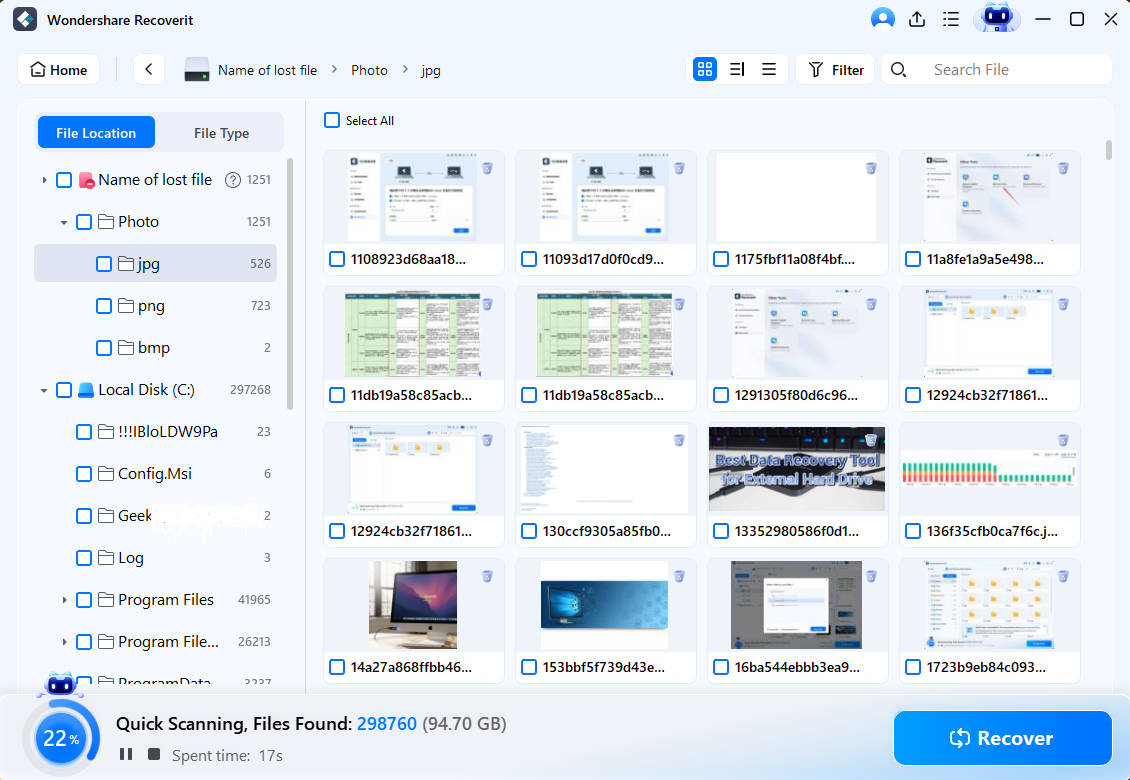
Step 3. Save the Scanned Results of the Lost Files in a Windows PC
Once the scanning is complete, click the "Save" icon to save the scanned results of the lost files.
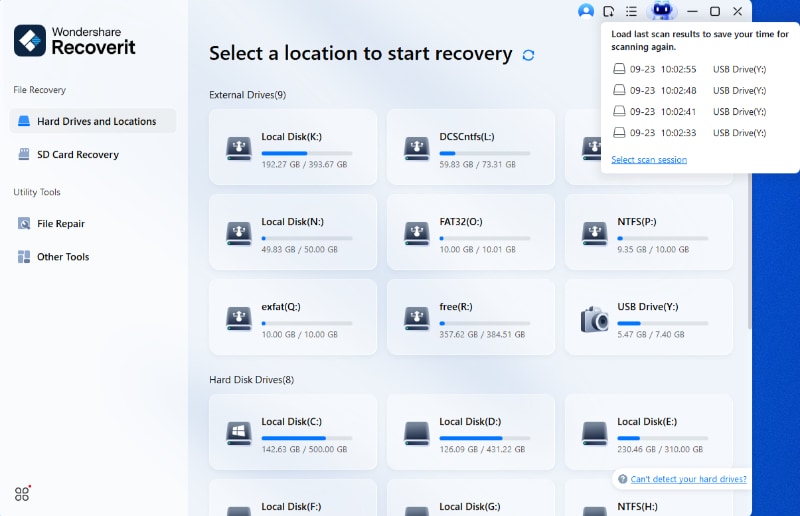
Step 4. Complete The Scan Process and Save Files to the Original Location
Finally, click on the "OK" button to preview and save the recovered files to their original locations.

Conclusion
In conclusion, this article examines the various reasons why a PC may encounter the Windows Update blank page in settings issue. We then examined the multiple solutions you tried to resolve the blank screen issue and re-access the Windows Update screen. Moreover, we have provided you with a pro tip to help you recover lost data and repair corrupted files after resolving the Windows Update screen issue.
FAQ
-
1. Why is my computer on, but the screen is black after the update?
A black screen after an update often occurs due to incomplete installations, driver conflicts, or corrupted system files. The system may be running in the background, but the display isn’t initializing properly. In some cases, connected peripherals or outdated graphics drivers can also trigger this issue. -
2. How to fix the black screen after the Windows 10 update?
You can resolve the issue by restarting your computer in Safe Mode and updating or rolling back your display drivers. Running repair tools like SFC and DISM also helps resolve corrupted system files. If nothing works, performing a system restore or uninstalling the problematic update usually restores the display. -
3. How to reset a PC with no display?
To reset a PC without a display, you can use recovery options such as booting from a Windows installation USB drive or accessing Advanced Startup using shortcut keys. From there, you can reset the device to factory settings. This allows you to repair the Windows update white screen even if the main screen isn’t showing. -
4. Can a virus cause a black screen?
Yes, specific malware or viruses can corrupt system files or interfere with essential processes, leading to a black screen. They may disrupt boot operations or damage the Windows Explorer process. Running a full antivirus scan or booting into Safe Mode helps detect and remove these threats.




 ChatGPT
ChatGPT
 Perplexity
Perplexity
 Google AI Mode
Google AI Mode
 Grok
Grok























